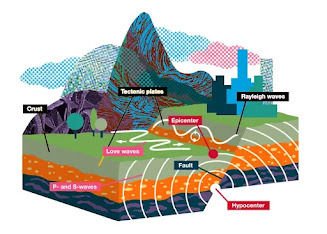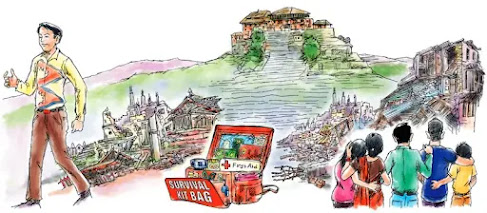Introduction
In the grand tapestry of natural phenomena, earthquakes stand as a powerful reminder of Earth's dynamic and ever-evolving nature. These geological events, marked by sudden shaking of the ground, carry immense significance and pose both challenges and opportunities for human societies worldwide. Let's delve into the fascinating world of earthquakes, their causes, impacts, and the resilience they inspire in the face of nature's might.
1- The Earth's Restless Soul: Causes of Earthquakes
At the heart of earthquakes lies the Earth's constant movement and transformation. The Earth's lithosphere is divided into several tectonic plates that float atop the semi-fluid asthenosphere. The interactions between these plates give rise to different types of earthquakes:
1- Tectonic Earthquakes: These result from the movement of tectonic plates along faults. Subduction zones, where one plate slides beneath another, often trigger powerful earthquakes.
2- Volcanic Earthquakes: Associated with volcanic activity, these earthquakes occur due to the movement of magma beneath the Earth's surface.
3- Induced Earthquakes: Human activities like mining, reservoir-induced seismic (due to large dams), and hydraulic fracturing (fracking) can trigger earthquakes.
2- Nature's Tremors Unleashed: Impacts of Earthquakes
1- Structural Damage: Earthquakes can wreak havoc on buildings, bridges, and infrastructure, leading to loss of life and property.
2- Tsunamis: Underwater earthquakes can trigger tsunamis—massive sea waves capable of causing widespread devastation along coastlines.
3- Landslides and Avalanches: The intense shaking can dislodge soil and rocks from slopes, causing landslides and avalanches.
4- Seismic Waves: Ground shaking can generate seismic waves that travel vast distances, impacting regions far from the epicenter.
3- Resilience and Preparedness: Lessons from Earthquakes
1- Building Codes and Engineering: Many earthquake-prone regions enforce strict building codes and engineering practices to minimize damage.
2- Early Warning Systems: Technological advancements have led to the development of early warning systems that provide crucial seconds of advance notice before the tremors hit.
3- Community Preparedness: Education and community drills can save lives by ensuring people know how to respond during an earthquake.
4- Cultivating Respect for Earth's Forces: Earthquake Awareness
1- Education and Awareness: Teaching about earthquakes in schools and communities fosters a better understanding of these phenomena.
2- Environmental Impact: The study of earthquake impacts on the environment underscores the interconnections of Earth's systems.
3- Seismic Hazard Assessment: Mapping seismic hazard areas helps governments make informed decisions about urban planning and infrastructure development.
Conclusion: The Unpredictable Symphony of Earth's Motion
Earthquakes are a testament to the Earth's vibrant and intricate workings. While they remind us of nature's unpredictability, they also drive scientific curiosity, innovation, and preparedness. In the face of this raw display of Earth's power, human resilience shines through—showing that through knowledge, cooperation, and adaptability, we can mitigate the impact of these natural events. As we continue to unravel the mysteries of Earth's depths, let earthquakes be a call to respect, learn from, and coexist harmoniously with the forces that shape our world.





Comments
Post a Comment